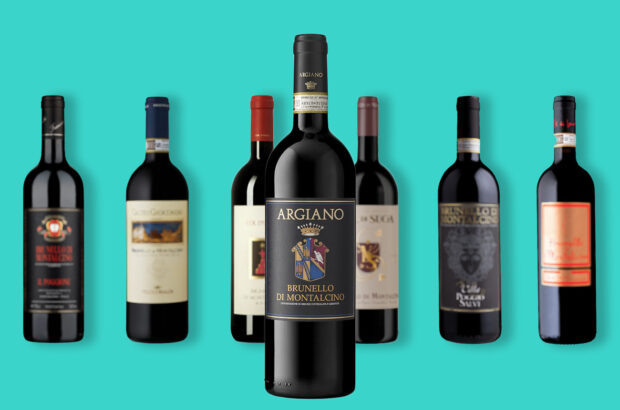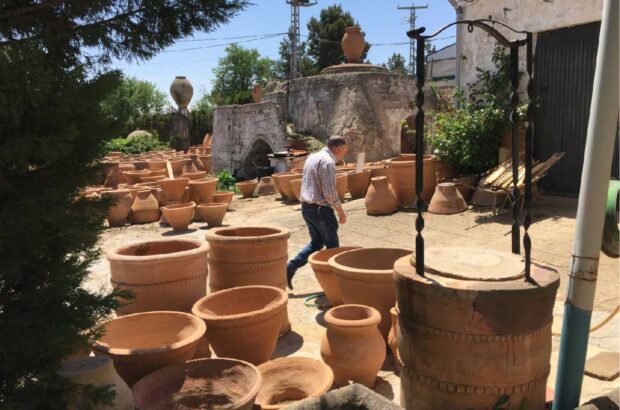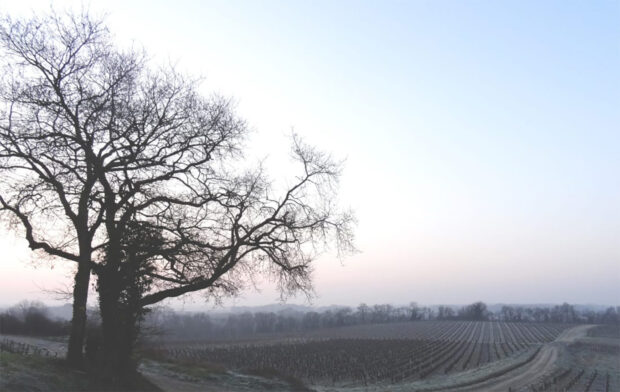- It’s darn hard to get yourself a glass of wine in Washington’s most exciting new wine region.
- While there is an identifiable team spirit in Walla Walla, there is still no distinct style to the region’s wines.
- The long growing season and perfect ripening conditions help deliver fruit that combines power and sensuality with a tight structure and incredible length of flavour.
- You would be pushed to find a more eclectic bunch of characters anywhere else in Washington, nor such an eclectic bunch of wines.
Drinking venues in the small agricultural town of Walla Walla come – presumably to aid visually impaired wheat farmers – in three distinct colours. The Red Apple (avoid at all costs), the Blue Mountain (spit and sawdust) and the Green Lantern (not life threatening).
The latter has a room-length shufflepuck table (indoor curling for hillbillies), a Garth Brooks monopoly on the jukebox and a beer-only drinking policy. The last time the local winemaking fraternity had a night out here, they ended up having to sneak bottles of old fortified Lemberger over the perimeter fence. Yup, it’s darn hard to get yourself a glass of wine in Washington’s most exciting new wine region.
A four hour journey from decent coffee, radio stations and restaurants (a place otherwise known as Seattle), Walla Walla lies to the southeast of the Tri-Cities, and is one of the few wine appellations in the US that straddles two states. The boundaries were set out according to geographical rather than political delineations, so despite the Seven Hills Vineyard being inside the Oregon border, wine made from its grapes is labelled as a product of Washington State. In such an expansive and humbling landscape where state boundaries seem an irrelevance, this appellation decision seems entirely appropriate.
Standing in Rick Small’s Woodward Canyon Vineyard (the most westerly vineyard in Walla Walla) the view is impressive. To the south, a line of giant propellers silently cut through the dry air on the Oregon Ridge, to the east lie the first lazy undulations of the Blue Mountains and beyond them Idaho, to the north is the Snake River and out west flows the giant Columbia River. Out here, men drive with their cowboy hats on, and it looks right.
The town itself grew up in the last century as a trading centre for the Hudson Bay Company. Incorporated as a city in 1859, it expanded so fast that by 1882 it had a population of 4,000, boasted a staggering 26 saloons and attracted a wide mix of immigrant communities. Of these, it was the Italians that pioneered winemaking in the area. While a man called AB Roberts has been credited with establishing one of the first vine nurseries – importing up to 80 different grape varieties from France – it was Pasquale Saturno who began growing grapes and making wine. As well as transporting Zinfandel grapes up from California, he cultivated a grape referred to as ‘Black Prince’ (identified since as being Cinsaut) which as well as being a good grape to eat, made decent rosé-style light table wine.
But Saturno and his counterparts like Frank Orselli suffered when the Walla Walla boom turned to bust. The end of the gold rush and the growth of coastal cities caused it to become a trading backwater, and 26 saloons soon became one. What little viticulture survived was then wiped out by Prohibition, so when another Italian, Bert Pesciallo, set up the first commercial winery in the 1940s he was not only alone, but probably considered a complete loon. He, too, eventually went out of business due to lack of grape supply – peas, wheat, onions and apples were considered a much better bet than vines.
Then in 1973, yet another man with Italy in his blood decided to give grapes one more go. His name was Gary Figgins (his mother, Mrs Leonetti, provided the Italian roots) and inspired by his predecessor’s work, he planted a small Merlot vineyard. A machinist by trade, Figgins – despite no winemaking experience – decided in 1978 to crush some of what he grew, and so it was that one of Washington’s most famous wines was born. Originally pro-active in his sales technique – he invited wealthy lawyers and doctors to come and taste his wine – Figgins today has a waiting list for his mailing list and Leonetti wines are talked about (if perhaps not drunk) around the world.
While the locals thought Figgins was daft to set up a winery, the reaction Rick Small got was just plain unfriendly. His decision to plant Woodward Canyon Vineyard in 1979 meant that his neighbours had to switch from spraying their wheat from planes to weedkilling from the ground. Small was about as popular as El Niño, but he ignored the jibes and those same farmers (seeing today’s Walla Walla grape prices rise to $1,500 [£900] a tonne) are now asking him what and where they should plant vines. A year after Small’s first harvest, Jean and Baker Ferguson set up L’Ecole 41 in the old schoolhouse in Lowden (once called Frenchtown), and as if by domino effect, a year later they were joined by Eric Rindal at Waterbrook. Once again, Walla Walla had a wine community.
And what a community it has become. You would be pushed to find a more eclectic bunch of characters anywhere else in Washington, nor such an eclectic bunch of wines. Motormouth Small, Rick Moranis lookalike Gordy Venneri, bagpipe-playing Rusty Figgins, and the team at L’Ecole 41: when this lot get together for a generic promotion somewhere, you know about it.
But while there is an identifiable team spirit in Walla Walla, there is still no distinct style to the region’s wines. With so few grapes being grown in the area (the entire region produces only one per- cent of Washington’s wine), most wineries have had to (and still do) use grapes harvested elsewhere in the state. For this reason – and the fact that a lot of Walla Walla fruit ends up being trucked to producers to the west – the appellation has struggled to form a real identity. The balance is changing though. With up to 75 per cent of Walla Walla grapes now being crushed in the vicinity, and new plantings increasing the vineyard area to about 121 hectares (ha), more true Walla Walla wines are emerging.
If Gary Figgins was responsible for kickstarting winemaking in the region, it is Norm McKibben who has pioneered the viticulture. This ex-engineer turned grape grower (and now chairman of the Washington Wine Commission) has a ‘no problem can’t be solved’ mentality and a solid (and infectious) belief in Walla Walla’s potential. This confidence forms the backbone to all the experimentation and research he has done in the region’s two main vineyards, Pepperbridge and Seven Hills. Over 57ha of new vines are going into these two, and they are some of the most technologically advanced viticultural sites you’ll see in the US. The very latest in drip irrigation systems, soil moisture and temperature equipment are hooked up to McKibben’s laptop along with every other bit of data required to track a young vine’s progress and fruit development. These babies are being as closely monitored as a two-day old sprog in an incubator.
Comparing Walla Walla’s climate with Yakima to the east, the former has higher heat units (2,850 to Yakima’s 2,580), higher rainfall (37cm to Yakima’s 20cm) and lighter soils. The latter are a mixture of windblown loess and clay, with more clay at Pepperbridge than at Seven Hills. Most of the 100ha planted is split between Cabernet Sauvignon and Merlot, and although the Cabernet has the benefit of being more resistant to the occasional hard winters (like 1996), Merlot gets the edge on quality, style and regional personality. It really sings a different song in Walla Walla.
In the global race to try and fit soft, succulent Merlot into some elegant, long lasting clothes, the winemakers here seem to have found a pretty good tailor. The long growing season and perfect ripening conditions help deliver fruit that combines power and sensuality with a tight structure and incredible length of flavour. One of my abiding memories of working the harvest at Andrew Will Winery – Chris Camarda’s Vashon Island operation – was the incredible aroma that filled his winery while his Seven Hills Merlot was fermenting. If there was a market for bottled grape scents, this rich, heady compote of berries and sweet flowers would be a bestseller.Merlot, more than Cabernet, seems to express the differences in soils and microclimate between Seven Hills and Pepperbridge. The former is slightly warmer with better drainage, and the wines tend to be more aromatic and forward with a softer mouthfeel.
Camarda notes a sage character in Seven Hills Merlot and there do seem to be more of the complex secondary flavours and aromas compared to Pepperbridge. The latter leans towards pure berry fruit and the style seems to be a bit more muscular and tannic.
The other two varieties that look to be well suited to Walla Walla are Syrah and Sangiovese, and the Figgins brothers are providing the best evidence. At Glen Fiona, Rusty is producing an intense basket press reserve Syrah that exhibits some leathery/earthy complexity and a lingering finale of pepper and nutmeg. Over at Leonetti, a taste of Gary’s 1997 Sangiovese (blended with a little Petite Syrah and Petit Verdot) suggests this late-ripening variety could be perfect for the appellation’s long summers. ‘I don’t care whose Sangiovese you want to throw into the competition – Antinori, whoever – I reckon ours would make its mark,’ he says.
White wines are very much a minority, and apart from a small amount of Chardonnay at Waterbrook, and Norm McKibben’s yet-to-yield plantings of Viognier and Sémillon, there seems little likelihood that Walla Walla’s red reputation is going to be dented. Particularly not when you hear that Carmenère, Malbec, Barbera and Dolcetto will soon be adding breadth to the red portfolio.
So, the future is very bright in Walla Walla, with new plantings and wineries creating a real buzz about the region. The Chalone group have contracted a 20ha planting, Gary Figgins will soon be receiving fruit from his new Mill Creek Uplands vineyard, and Frenchman Christophe Baron will be making Syrah and Cabernet at his Cayuse Vineyards operation. Add to that the wineries being set up by Eric Dunham (assistant winemaker at L’Ecole) and by McKibben and Mike Hogue at Pepperbridge, and you have a situation where a Walla Walla wine trail might not be too far away.
‘Water rights permitting, we could see 400ha of vines in this valley one day,’ says McKibben. Who knows, they might even start to serve wine in the Green Lantern.
Walla Walla wineries and wines
Canoe Ridge Vineyard
The most high profile winery in Walla Walla, but one that uses no local fruit (as yet). Very good Chardonnay and Merlot from the eponymous site.
Dunham Cellars
Eric Dunham makes a lovely fat-textured Sémillon-Chardonnay blend (labelled as Shirley May’s Proprietary Blend) and a deep-coloured, well-rounded Cabernet that shows great concentration of fruit. With a new winery on the way, this is one to watch.
Glen Fiona
Rusty Figgins is a man with some Celt in his blood and a lot of Rhône in his heart. His 1997 Syrah is very dark, very dense and very big on flavour. The winery is open to the public on the first and second weekends of May.
L’Ecole 41
Marty Clubb’s wines are a lot more grown up than his label design (a distinctive child’s drawing of the old schoolhouse). Look out for his rather quirky Cabernet Sauvignon from Windrow Vineyard and the muscle-bound Apogee blend from Pepperbridge.
Leonetti
The grandfather of Walla Walla’s boutique pack and the one with the most devout cult following. Figgins’ Merlot is one of the classiest you’ll find in Washington, and the new Sangiovese is definitely going to make a big impact.
Seven Hills Vineyards
An office in Washington, a winery just over the border in Oregon, and wines from both states. Casey McClellan is enjoying the best of Willamette Valley (lovely Pinot Gris) and Walla Walla (Cabernet and Merlot) fruit. The Merlot is superb.
Walla Walla Vintners
Set up in 1995, this small winery has already forged a Leonetti style following thanks to some rave reviews for its Merlot, Cabernet Franc and Cabernet Sauvignon. The Bordeaux blend called Cuvée needs some bottle age but should develop into something very classy.
Waterbrook
Eric Rindal’s small winery makes better whites than reds. The Columbia Valley Chardonnay is beautifully weighted, and his first vintage of Viognier (1997) shows great promise. Peachy-sweet pea aromas, good acidity and a wonderful, slightly waxy texture.
Woodward Canyon
Only 10% of Rick Small’s fruit comes from Walla Walla. The Old Vines Cabernet Sauvignon is a real blockbuster with lots of dark, compact fruit and a perfect balance of suppleness and grip. The Artist Series Cabernet is less complex but equally generous in its delivery of fruit.











